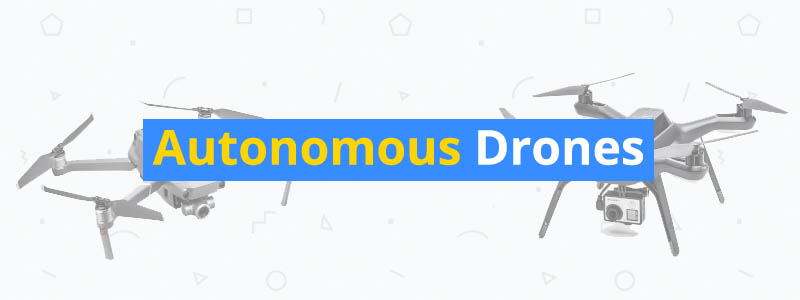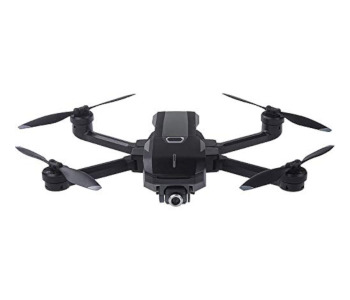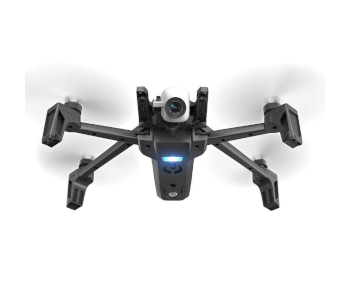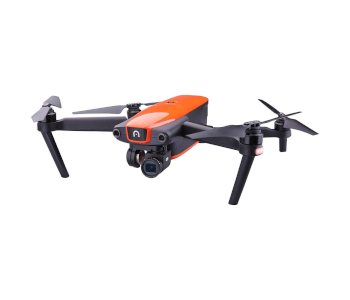7 Best Autonomous Self-Flying Drones
What are autonomous drones exactly and why should you care? Well, piloting drones can be an intimidating experience for novice pilots. Anyone who’s done their research knows all about crashes, collisions, and the dreaded flyaways. A flyaway occurs when a drone loses its signal with the controller and thus fails to respond to commands.
A lot of pilots have lost their beloved drones forever due to flyaways. They occur less often than they used to, but it still happens. Pilot error and misjudgment often cause drones to behave in destructive ways too. Autonomous modes and features help to prevent all the above by automating certain tasks.
| Budget |
|---|
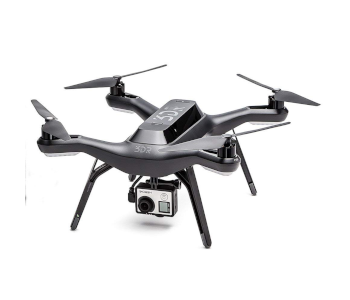 |
| 3DR Solo Camera Quad |
| 4.4/5.0 |
| Flight Time: 20 minutes |
| Flight Range: 2640 feet |
| Easy to fly, safety features, GoPro-ready, full-featured app, SmartShots. |
| Check Amazon |
| Best Value |
|---|
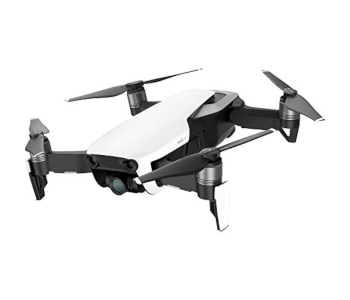 |
| DJI Mavic Air Camera Quad |
| 4.7/5.0 |
| Flight Time: 21 minutes |
| Flight Range: 2.4 miles |
| Foldable, portable design, easy to fly, gesture controls, 4K gimbal camera. |
| Check Amazon |
| Top Pick |
|---|
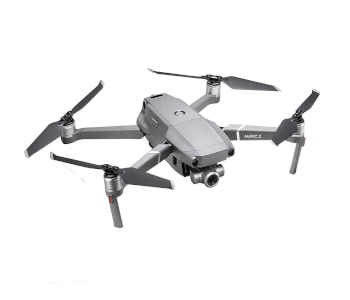 |
| DJI Mavic 2 Zoom Camera Quad |
| 4.8/5.0 |
| Flight Time: 31 minutes |
| Flight Range: 5 miles |
| Easy to fly, 4K video, gimbal camera, long flight time, long range, low noise, fast. |
| Check Amazon |
Drone Autonomous Smart Features
Flying drones whether for fun, aerial filming, or racing is not as arduous as it used to be. Today, quadcopters (4 props) are the most common of the multirotor aircraft. Even basic models come with a bunch of novice-friendly flight features. These independent systems exist to make piloting easier and more enjoyable. The list below shows some of the most common autonomous flight features.
- Follow Me aka subject tracking
- Return to Home (RTH)
- Cable Cam
- Selfie
- Waypoints
How Autonomous Flight Modes Assist Pilots
Here’s a simple breakdown of how these autonomous modes make life simple for pilots.
Follow Me came around in 2016, and the technology has gotten better ever since. A drone automatically follows and films a predefined moving subject in this mode. You often see it used in action events and sports. The aerial footage produced by tracking subjects can be awe-inspiring.
Return to Home (RTF) is an invaluable autonomous drone flight feature. A one-key action from the remote controller (RC) typically triggers RTH. The drone obeys the command and comes back to its original takeoff position. It’s a useful feature if a pilot loses control—or is about to lose control—of the drone. And if the craft is heading out of range, then it’s a great way to prevent flyaways.
Cable Cam is a virtual cable through the sky that the drone attaches to. The user creates the “cable” by selecting a point A and point B (destination). The pilot is then free to focus on the camera and capture footage without worrying about the drone. The quadcopter needs no flight assistance as it auto flies to its predefined destination. Aerial videography doesn’t get much easier than that.
Selfie mode is vital in a world gripped with self-portraiture and social media. There are even quadcopters that the makers promote as selfie drones, especially the palm-sized models. Selfie modes vary, but they all work by instructing the drone to film or photo the subjects. The flying camera then hovers into position on demand and takes stills or video at the correct exposure.
Waypoints are typically a set of predefined coordinates in the air. The positioning technology used for waypoints guides the drones. You can also set waypoints along a cable cam (see above). It’s possible to get the drone to fly in specific ways at the various waypoints like altitude and speed. Pilots can then focus on shooting with the camera as the drone cruises between its waypoints.
It’s also possible to save favorite flight paths for future use should you want to revisit them. Waypoints are especially useful when flying and filming along otherwise complex routes.
OK, these are some of the most popular autonomous drone features. There are others, and we know there will be new and exciting additions to the existing ones in the times ahead.
When Autonomy Gets Boring
Drones at the consumer level are not 100% autonomous and still need a pilot’s input at some point. Most autonomous features are also optional. That means you can exploit them if you want to or take back control if you don’t. Some folks love the thrill of flying and controlling everything manually. FPV racers and explorers flying into unknown spaces are good examples.
Flight autonomy is perfect for beginners piloting their first multirotor craft. These features are also welcome at any level so that pilots can choose when and if to exploit them.
About this Guide
This guide looks at seven favorite autonomous drones. All models on this page are camera quads that have some or all the autonomous features mentioned here. The picks are the result of extensive research, expert opinions, and real user feedback. The three at the top are Best Budget, Best Value, and the Top Pick. All others are in price order, lowest to highest.
The table below shows the order of the reviews.
Autonomous Drones Comparison Table
| Make and Model | Flight Time | Flight Range | Price |
|---|---|---|---|
| 3DR Solo Autonomous Quadcopter Bundle | 20 minutes | 2640 feet | Check Price |
| DJI Mavic Air Autonomous Camera Drone | 21 minutes | 2.4 miles | Check Price |
| DJI Mavic 2 Autonomous Zoom Camera Quad | 31 minutes | 5 miles | Check Price |
| Yuneec Mantis Q YUNMUS Foldable Camera Drone | 33 minutes | 4921 feet | Check Price |
| The Autonomous DJI Spark, Fly More Combo | 16 minutes | 1.2 miles | Check Price |
| Parrot ANAFI Autonomous Foldable Camera Drone | 25 minutes | 2.5 miles | Check Price |
| Autel Robotics Autonomous EVO Smart Quad | 30 minutes | 4.3 miles | Check Price |
1. 3DR Solo Autonomous Quadcopter Bundle | Best Budget
Editor’s Rating: 4.4/5
The 3DR Solo here is a smart camera quadcopter and an excellent choice for beginners. It even comes equipped with twin computers to ensure seamless operation always.
- Best feature 1: Autonomous flights via twin-computer control system
- Best feature 2: Video game-style controller
- Plus points: Easy to fly, safety features, GoPro-ready, full-featured app, SmartShots
- Minus points: Gimbal and camera not included, no avoidance system
Autonomous Features of the 3DR Solo’s
This popular camera quadcopter comes with a range of amazing autonomous features:
- One-touch take-off and landing
- Smart Shots: Orbit, Follow Me, Cable Cam, and Selfie
- Unique safety features: pause, safety net, and return-to-home (RTF)
- Predetermined flight paths
3DR Solo’s Standout Features
3DR’s Solo camera-ready quad is a high-tech, easy-to-fly consumer drone. It’s an excellent choice for novice pilots and anyone familiar with using a regular video game-style controller. It was genuine video game professionals who developed the RC. As a flier, the Solo can reach up to 50mph and is super-responsive to flight controls. That’s great news for anyone who’s into the sport of quad racing.
The Solo is also crash-resistant—up to a point—which adds to its appeal as a racing drone. Pilots have fingertip control using the Android/iOS app and a regular smartphone. There’s also a clamp with the controller that accommodates most conventional sized mobile devices. The makers of this capable and fun-loving drone created it to work in harmony with GoPro HERO action cameras.
The Not So Good
This 3DR Solo comes ready to fly (RTF) but not ready to film. It’s GoPro compatible which means you must have a GoPro action camera to take aerial photos and shoot video. Pilots who already own a compatible GoPro are at an advantage. It also needs a 3-axis Solo gimbal (sold separately) to stabilize the footage. The other disappointment is the absence of an obstacle avoidance system.
| Tech Specs |
|---|
| Dimensions: 18 x 18 x 10” |
| Product Weight: 3.35 lbs. |
| Camera: GoPro Hero 3+/4 (not included) |
| Stabilizing gimbal: Solo 3-axis (sold separately) |
| Max Flying Time: 20+ minutes |
| Max Range: 2640 ft. (0.5 mile) |
| Battery: 14.8V 5200 mAh LiPo |
| Charging Time: 1+ hour |
| The Pros |
|---|
| Twin-computer control system |
| Range of autonomous flight features |
| Video game-style controller |
| Easy to fly quadcopter |
| Fast top speed |
| Crash-resistant |
| Safety features |
| GoPro-ready |
| Fully-featured flight app and smartphone flight control |
| Smart Shots |
| The Cons |
|---|
| Gimbal and camera not included |
| No obstacle avoidance system |
2. DJI Mavic Air Autonomous Camera Drone | Best Value
Editor’s Rating: 4.7/5
The brains behind the Mavic Air thought of everything for this smart, ultra-portable travel quad. Both the drone and its controller fold down so that it’s easy to store and carry anywhere.
- Best feature 1: FlightAutonomy 2.0
- Best feature 2: QuickShots
- Plus points: Foldable, portable design, easy to fly, gesture controls, 4K gimbal camera
- Minus points: Average battery life, price
Autonomous Features of the Mavic Air
The Mavic Air has many high-end features. Some of its autonomous ones include:
- ActiveTrack (senses up to 16 subjects simultaneously)
- QuickShots: (6): Rocket, Dronie, Circle, Helix, Asteroid, and Boomerang
- SmartCapture hand gesture controls
- FlightAutonomy 2.0: Altitude Hold, Advanced Pilot Assistance Systems (APAS)
DJI Mavic Air’s Standout Features
This drone is one of the most portable to contain a 3-axis stabilized gimbal 4K camera. It does an excellent job at steadying aerial shoots. The vertical and horizontal 180° 23 MP panoramas are crystal-clear and out of this world. The Air shoots UHD quality 4K video at 30fps (frames per second) that has a truly cinematic quality. There’s also an option to film slow-motion video.
The 12MP stills are equally as impressive thanks to the 1/2.3” CMOS sensor and f/2.8 aperture. The Mavic Air has a MicroSD card slot to save its footage plus internal storage of 8GB. Transferring stills and video files via the USB port is fast and painless.
The Air’s foldable remote controller (RC) also deserves mention. It’s an intuitive low-profile RC with a clamp to accommodate regular smartphones. Even the control sticks detach and store away to make it as portable as possible. The quads top speed of 42mph means you can reach your destinations and back in no time. Yes, a lot is happening with the Mavic Air, and it’s almost all good (see next).
The Not So Good
The flight time is not terrible, but at 21 minutes it’s not great either for a quad in this price range. DJI batteries are costly, so that makes the average flying time more of an issue. The DJI Mavic Air is still exceptional value. At around 700 dollars, though, it’s a fair chunk of cash nonetheless.
| Tech Specs |
|---|
| Dimensions: 6.6 x 7.2 x 2.5” |
| Product Weight: 15.16 oz. |
| Camera: 85° FOV 12mp 4K |
| Stabilizing gimbal: 3-axis |
| Max Flying Time: 21 minutes |
| Max Range: 2.4 miles (4km) |
| Battery: 11.55 V 2970mAh LiPo 3S Intelligent Flight |
| Charging Time: 55 minutes |
| The Pros |
|---|
| FlightAutonomy 2.0 |
| Six QuickShots |
| Foldable, portable design |
| Super-easy to fly |
| Hand gesture controls |
| 4K gimbal camera |
| Decent range |
| The Cons |
|---|
| Average battery life |
| Quite expensive |
3. DJI Mavic 2 Autonomous Zoom Camera Quad | Top Pick
Editor’s Rating: 4.8/5
The Top Pick goes to the DJI Mavic 2x optical Zoom foldable camera quadcopter. This is currently DJI’s premium travel drone. It’s for enthusiasts who demand high-quality results from aerial shoots.
- Best feature 1: Upgraded autonomous features
- Best feature 2: Flight simulator
- Plus points: Easy to fly, 4K video, gimbal camera, long flight time, long range, low noise, fast
- Minus points: Camera not as good as the Mavic 2 Pro, price
Autonomous Features of the Mavic 2
DJI’s Mavic 2 Zoom is an exceptional piece of engineering. It also has an entire range of autonomous flight modes. The features that guarantee easier flying and enhanced filming potential include:
- Hyperlapse: flight paths, Free, Circle, CourseLock, and Waypoint
- FlightAutonomy (upgraded) includes Omnidirectional Obstacle Sensing
- ActiveTrack 2.0: Trace Mode, Spotlight Mod, and Parallel Mode
- QuickShots: Rocket, Dronie, Circle, Helix, Asteroid, Boomerang, and Dolly Zoom
- Points Of Interest (POI 2.0)
- Waypoint Navigation
- TapFly: Forward, backward, and Free
Mavic 2 Zoom’s Standout Features
The build quality of the Mavic 2 Zoom is second to none and extremely sturdy. The aerodynamic design contributes to the long 31-minutes flight time and a range of up to 5 miles (8 km). It’s fast too, with a top speed of around 44mph. The 1/2.3” CMOS sensor, 12-megapixel, 4K 3-axis gimbal camera is unique. Its smooth 24–48mm optical zoom boasts 4x lossless zoom capability.
A camera drone with a zoom lens opens lots of creative potential. It lets aerial videographers zoom in and out to capture high-quality stills and video in new perspectives. The aerial footage saves to an SD card up to 128GB. There’s also a handy 8-gigabytes of internal storage. Another standout feature is the Mavic 2’s low-noise props that provide quiet flights and help extend the range.
There’s so much to explore with DJI’s latest flagship camera quad. Most differences and upgrades are subtle at first glance. Even so, what these new drones do offer delights Mavic fans the world over.
The Not So Good
There’s not much to fault with the Mavic 2 Zoom, at least not while it’s still early days. Its camera is superb, but it’s not a Hasselblad like the Mavic 2 Pro. That means it doesn’t share the same incredible image quality. But then the Mavic 2 Pro doesn’t Zoom. The price of this quad is about right considering its build and features. Alas, it’s sure to be out of budget for a lot of budding drone pilots.
| Tech Specs |
|---|
| Dimensions: 18.2 x 12.2 x 9” |
| Product Weight: 32 oz. (907g) |
| Camera: 12MP 24-48mm optical zoom |
| Stabilizing gimbal: 3-axis |
| Max Flying Time: 31 minutes |
| Max Range: 5 miles (8 km) |
| Battery: Intelligent Flight 3850 mAh LiPo |
| Charging Time: 90 minutes |
| The Pros |
|---|
| Upgraded autonomous features |
| DJI Flight Simulator |
| Easy to fly |
| High-quality aerial zoom camera |
| Long flight time (battery life) |
| Long flight range |
| low noise propellers |
| Fast top speed |
| The Cons |
|---|
| Camera not as good as the Mavic 2 Pro |
| High price tag |
4. Yuneec Mantis Q YUNMUS Foldable Camera Drone
Editor’s Rating: 4.3/5
The latest camera quad from Yuneec is the foldable Mantis Q. Don’t let its small size put you off. It may be tiny, but it’s also powerful and comes packed with innovative features.
- Best feature 1: Autonomous flight & shooting features
- Best feature 2: Compact folding design
- Plus points: Easy to pilot, facial detection, voice control, long flight time, fast flier
- Minus points: No gimbal stabilization, shaky 4K footage, no internal storage
Autonomous Features of the Yuneec Mantis Q
The Yuneec Mantis Q has a range of autonomous features some of which include:
- IPS (Indoor Positioning System)
- Journey
- Orbit
- Point of Interest (POI).
- Return to Home (RTH)
- Vision-based tracking and face detection
- Voice Control
Yuneec Mantis Q’s Standout Features
The Yuneec Mantis Q joins the growing family of portable travel drones at 1lb or less. It can easily fit into large pockets and small bags. The 4k UHD camera gives plenty of opportunities to record clear video and shoot impressive stills. Photo Modes include Normal, Gesture, and Face Detection. The best way to describe the footage is very good rather than exceptional, though.
All video and stills save to the included 6GB MicroSD card in JPEG or DNG file format. The drone has an exceptional flight time of 33 minutes in ideal conditions. The Sport mode can push this tiny bird to a speed of 44.7mph (72 km/h). That’s handy for anyone who wants to dip their toe into the growing sport of drone racing. You can fly the Mantis Q with a smartphone and app, but it’s not the best option.
The remote controller (RC) has a clamp to house a regular smartphone with the Yuneec Pilot app. There’s a dedicated return-to-home button on the RC and a high-speed switch. The two control wheels along its top can change camera angles and adjust screen brightness.
The Not So Good
The biggest con with the Yuneec Mantis Q is that there’s no 3-axis gimbal stabilization. That’s a disappointment considering its price tag, and it lets the 4k video down. There’s little point promoting 4K UHD video when the results can be shaky. Another negative is the absence of internal storage.
| Tech Specs |
|---|
| Dimensions: 9.8 x 7.3 x 2.3 |
| Product Weight: 16.9 oz. |
| Camera: 117° FOV 4K |
| Stabilizing gimbal: None |
| Max Flying Time: 33 minutes |
| Max Range: 4,921 feet (1500 meters) |
| Battery: 2800mAh LiPo 3S |
| Charging Time: 1 hour |
| The Pros |
|---|
| Autonomous features |
| Compact folding design |
| Easy to pilot |
| Facial detection |
| Voice control |
| GPS & Return-to-Home (RTH) |
| Long flight time |
| Fast flier |
| The Cons |
|---|
| No gimbal stabilization |
| Potentially shaky 4K footage |
| No internal storage |
5. The Autonomous DJI Spark, Fly More Combo
Editor’s Rating: 4.5/5
The palm-sized DJI Spark is a best-selling camera quadcopter. It provides fans with easy controls and spectacular results for a consumer drone in its class.
- Best feature 1: Plethora of autonomous features
- Best feature 2: Small and portable design
- Plus points: Simple control, quick launch, gimbal camera, First Person View (FPV)
- Minus points: Limited flight time, potentially spotty WiFi
Autonomous Features of the DJI Spark
The Sparks autonomous features make filming and flight control easy at any level:
- Obstacle Detection
- Altitude hold
- DJI’s GEO system
- Subject Tracking from various angles
- GPS- & Vision Position-Based Navigation
- Return-to-home
- Shooting modes: PanoSphere, Pano-180°, PanoVertical, PanoHorizontal, and ShallowFocus
DJI Spark’s Standout Features
The Spark has a neat feature called FaceAware. What it does is lift the drone up from the palm of a hand using only facial recognition. It then goes into an automatic hover as it awaits its next flight command. Pilots can then continue to fly and control the camera using hand gestures. That means there’s no need for a smartphone or controller for selfies and other nearby shooting.
It’s also possible to control the Spark using a remote controller (RC) and a smartphone. These control methods and the intuitive DJI GO 4 app give Spark pilots more advanced options. One of those includes TapFly—a flight mode that works by “tapping” the phone screen to “fly.” And the Sport mode can take this puppy to a top speed of 31mph (50kph). That’s a lot of Propulsion for a small drone.
The gimbal-stabilized camera has a 1 /2.3” CMOS sensor and shoots stunning videos at 1080p. Both the video and 12-megapixel photos are fantastic for a camera quad in this price category. It’s also quick and easy to edit and share aerial footage to social media using the DJI GO 4 app.
The Not So Good
The DJI Spark has a limited flight time of just 16 minutes. That’s on the low side of average. Extra batteries cost anywhere between 40–50 dollars. Another negative with the Spark is that some users have found the built-in WiFi spotty on occasions.
| Tech Specs |
|---|
| Dimensions: 5.6 x 5.6 x 2.2” |
| Product Weight: 0.66 lbs. |
| Camera: 12MP 1080P 30fps |
| Stabilizing gimbal: 2-axis (pitch & roll) |
| Max Flying Time: 16 minutes |
| Max Range: 1.2 miles (2 km) |
| Battery: Intelligent Flight 11.4 V 1480 mAh LiPo |
| Charging Time: 90-minutes |
| The Pros |
|---|
| Plethora of autonomous features |
| Small and portable design |
| Simple to control options |
| Quick palm launch |
| Gimbal camera |
| Obstacle avoidance technology |
| Failsafe features |
| First Person View (FPV) |
| The Cons |
|---|
| Limited flight time |
| Occasional spotty WiFi |
6. Parrot ANAFI Autonomous Foldable Camera Drone
Editor’s Rating: 4.6/5
The Parrot ANAFI is an ultra-compact 4K camera quad aimed at professional aerial videographers. It’s perfect for travel or work and can be up and running in no time. It even comes with a shoulder bag.
- Best feature 1: Autonomous flight features
- Best feature 2: Parrot Skycontroller RC
- Plus points: Business-friendly, easy to control, quiet, fast, agile, intuitive ANFreeFlight 6 app
- Minus points: Long charging times, no obstacle avoidance (OA), high cost of batteries
Autonomous Features of the Parrot ANAFI
Flying the ANAFI at the basic level is simple thanks to the apps autonomous piloting modes:
- Touch&Fly
- POI (Point of Interest)
- Flight Plan
- Geofence altitude and distance hold
- Smart Return to Home
Parrot ANAFI’s Standout Features
Parrot target ANAFI for commercial use though it’s still an excellent consumer quadcopter. It’s a quiet flyer too—for a drone. Many business sectors benefit from this incredible little quad. Some include agriculture, construction, real estate, and public safety. It’s also valuable for inspection, 3D modeling (needs Pix4Dmodel), and monitoring. Search & rescue and aerial promotion are two others.
The advanced ANAFI comes equipped with a pioneering imaging system. It has a 4K/21MP camera that has a 180-degree tilt 3-axis gimbal. That gives the camera access to otherwise inaccessible places. It’s an agile flier as well, and responds beautifully to controls, especially in calm weather. The drone’s top speed can reach 27mph (55 km/h) in its Sport mode.
The ANFreeFlight iOS/Android app is comfortable to navigate and even easier to use. It provides pilots with a smooth, hassle-free experience from any regular smart device. The foldable Parrot Skycontroller 3 (RC) has a clamp to accommodate all popular phones and tablets. The maximum flight time for this camera quad is a decent 25 minutes, and it has a range of 2.5 miles (4km).
The Not So Good
On-the-go computer USB-C charging is a welcome feature but its long charging time is not. It can take up to 270 minutes (4hrs 30mins). Even the wall socket can take up to 3+ hrs. Another drawback with the ANAFI quad is no collision detection system. That means pilots must take extra care when flying. The final gripe is the high cost of spare batteries.
| Tech Specs |
|---|
| Dimensions: 10.9 x 4.9 x 8.7” |
| Product Weight: 1lb. |
| Camera: 21MP 4K HDR Zoom |
| Stabilizing gimbal: 3-axis Hybrid |
| Max Flying Time: 25 minutes |
| Max Range: 2.5 miles (4km) |
| Battery: 7.6V 2700 mAh 2S LiPo |
| Charging Time: 2–3 hours depending on the power source |
| The Pros |
|---|
| Autonomous flight features |
| Compact foldable design |
| Parrot Skycontroller RC |
| Intuitive ANFreeFlight 6 app |
| Business and consumer-friendly |
| Easy to control |
| Quiet flier, fast & agile |
| Long flight time |
| Long flight range |
| The Cons |
|---|
| Long charging time |
| No collision detection |
| High cost of spare batteries |
7. Autel Robotics Autonomous EVO Smart Quad
Editor’s Rating: 4.5/5
Last on the list is the Autel Robotics EVO smart camera quadcopter. It’s another foldable and easily portable craft packed with easy-to-use yet sophisticated features.
- Best feature 1: Essential autonomous flight features
- Best feature 2: 12-megapixel 4K 3-axis gimbal camera
- Plus points: Foldable & portable, OLED RC, one-touch buttons, long flight time, long range
- Minus points: High price tag, little user feedback
Autonomous Features of the Autel Robotics EVO
Autel Robotics’ new EVO is already making a splash with its autonomous features:
- Obstacle avoidance
- Return to home!
- Auto takeoff and landing
- Dynamic Track
- Viewpoint
- Orbit
- Waypoint
That’s just for starters. Now let’s look to see if it’s a serious rival to DJI’s dominance.
Autel Robotics EVO’s Standout Features
The intuitive remote controller (RC) that comes with the EVO has a 3.3” OLED screen. It shows vital flight data and displays First Person View (FPV). So, no need for a smartphone or tablet. The drone has a high-quality 3-axis gimbal-stabilized camera. It can capture incredible 4K video at 60fps (frames per second) with its ultra-wide 94° lens. And the 12-megapixel aerial photos are bright and tack sharp.
Austell’s iOS/Android Explorer App gives access to autonomous features and advanced controls. Changing camera settings is straightforward from the remote controller’s (RC) built-in OLED screen. Other functions from the RC include turning obstacle avoidance ON/OFF and formatting memory cards. All aerial footage saves to the following card types: Micro-SD 4GB–128GB, Class 10 or UHS-3.
EVO’s one-touch buttons make this drone a real winner for novice enthusiasts. They include auto takeoff/landing, return-to-home (RTH), and 1-touch video/stills capture. The impressive 30-minute flight time and long 4.3-mile range add further to the EVO’s appeal.
The Not So Good
Autel Robotics EVO high-quality camera quad comes with quite a high price tag. It’s probably worth every penny, but it’s still too early to tell at the time of writing. It’s set to be a huge hit if it delivers as the Autel Robotics X-Star Premium did. The other downside is the lack of real user feedback. Maybe you’d like to be among the first to invest in this bird and have your say?
| Tech Specs |
|---|
| Dimensions: 7.8 x 3.8 x 4 |
| Product Weight: 1.9 lbs. |
| Camera: 12MP 4K 60fps Ultra-HD |
| Stabilizing gimbal: 3-axis |
| Max Flying Time: 30 minutes |
| Max Range: 4.3 miles (6.9km) |
| Battery: Intelligent EVO, 13.05V 4300mAh LiPo |
| The Pros |
|---|
| Autonomous flight features |
| High-quality gimbal camera |
| Foldable & portable design |
| Obstacle avoidance technology |
| Intuitive OLED remote controller |
| One-touch action buttons |
| Long flight time |
| Long control range |
| The Cons |
|---|
| High price tag |
| Little real user feedback |
Contents
- Drone Autonomous Smart Features
- How Autonomous Flight Modes Assist Pilots
- When Autonomy Gets Boring
- About this Guide
- Autonomous Drones Comparison Table
- 1. 3DR Solo Autonomous Quadcopter Bundle | Best Budget
- Autonomous Features of the 3DR Solo’s
- 3DR Solo’s Standout Features
- The Not So Good
- 2. DJI Mavic Air Autonomous Camera Drone | Best Value
- Autonomous Features of the Mavic Air
- DJI Mavic Air’s Standout Features
- The Not So Good
- 3. DJI Mavic 2 Autonomous Zoom Camera Quad | Top Pick
- Autonomous Features of the Mavic 2
- Mavic 2 Zoom’s Standout Features
- The Not So Good
- 4. Yuneec Mantis Q YUNMUS Foldable Camera Drone
- Autonomous Features of the Yuneec Mantis Q
- Yuneec Mantis Q’s Standout Features
- The Not So Good
- 5. The Autonomous DJI Spark, Fly More Combo
- Autonomous Features of the DJI Spark
- DJI Spark’s Standout Features
- The Not So Good
- 6. Parrot ANAFI Autonomous Foldable Camera Drone
- Autonomous Features of the Parrot ANAFI
- Parrot ANAFI’s Standout Features
- The Not So Good
- 7. Autel Robotics Autonomous EVO Smart Quad
- Autonomous Features of the Autel Robotics EVO
- Autel Robotics EVO’s Standout Features
- The Not So Good

